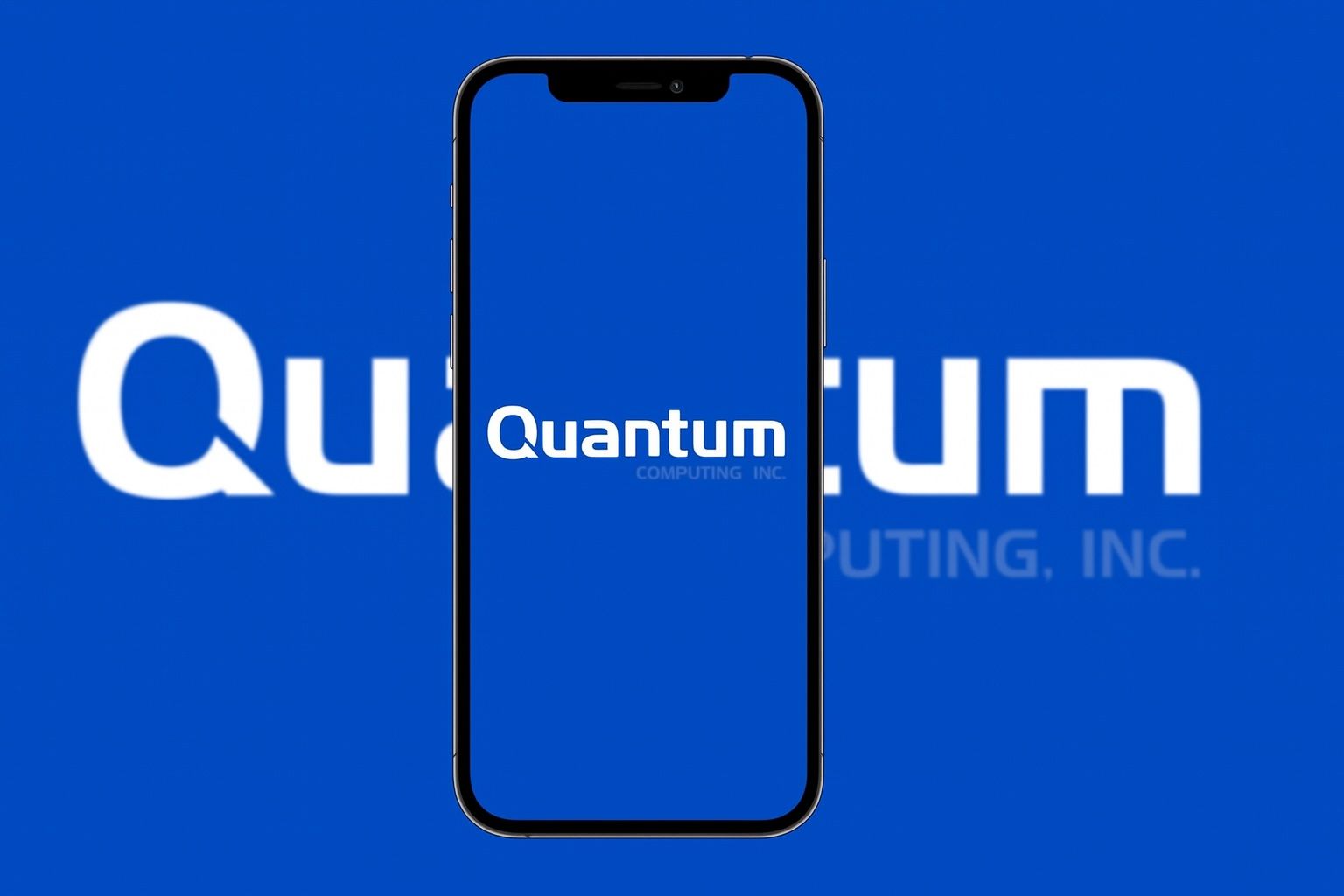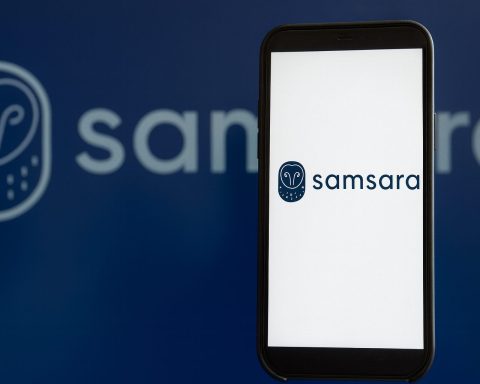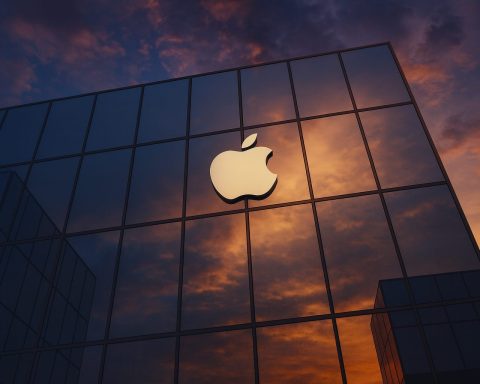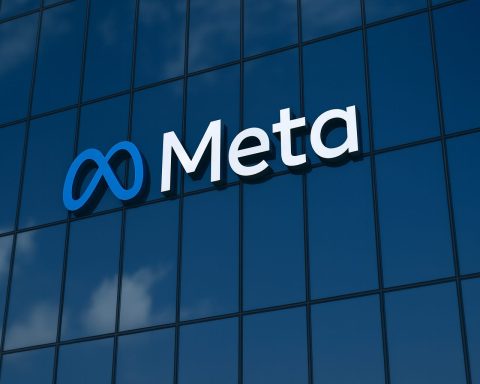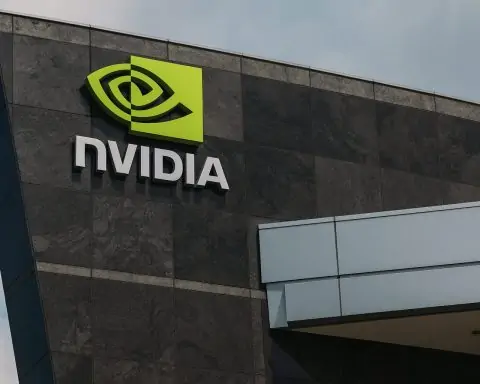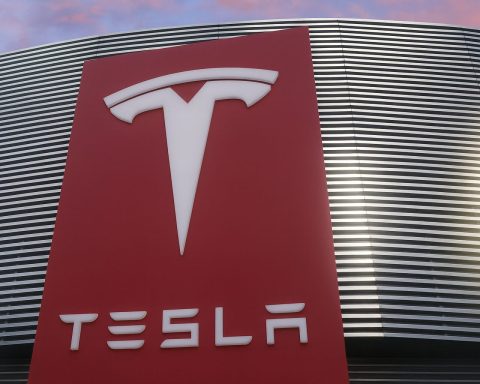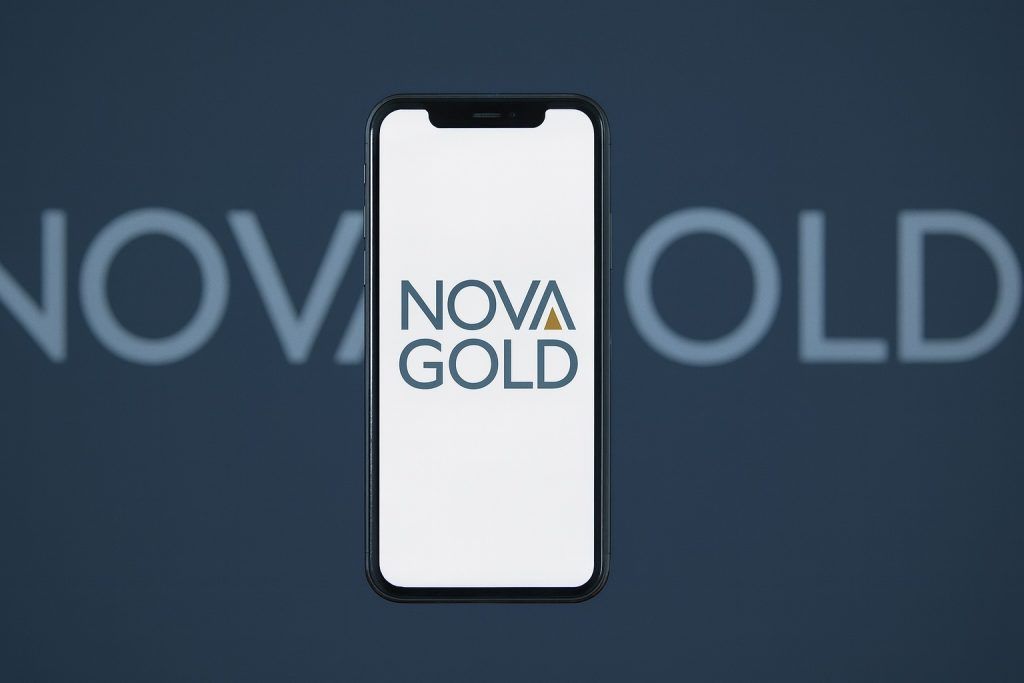| Metric (Oct 2025) | Value | Evidence |
|---|---|---|
| Share price (Oct 3 2025 close) | ≈US$15.91 (approx. YTD high) [1] | Motley Fool notes QS closing around $15.91 when the stock surged after a partnership with Corning and a live product demo [2]. |
| Market cap | ≈US$9 billion [3] | Motley Fool reported a market capitalization of ~$9 bn in Oct 2025 [4]. |
| 2025 YTD return (Oct 1 2025) | +181 % [5] | CoinCentral calculated a 181 % YTD return (vs. S&P 500’s 14.1 %) after QS stock surged following the Corning partnership [6]. Motley Fool also listed a +108 % YTD figure [7]. |
| 52‑week range | ≈US$3.40 – $16.49 [8] | The same Motley Fool article reported the 52‑week low and high [9]. |
| Liquidity (end‑Q2 2025) | $797.5 million [10] | QS’s Q2 2025 shareholder letter shows cash, cash equivalents & marketable securities of $797.5 M [11]. |
| Q2 2025 net loss | $114.7 M [12] | The Q2 2025 letter reports a GAAP net loss of $114.7 M and adjusted EBITDA loss of $63 M [13]. |
| PowerCo licensing payments | Up to $131 M over two years [14] | VW’s PowerCo expanded its agreement, offering up to $131 M in additional cash payments tied to technical and scale‑up milestones [15]. |
| Capital expenditure guidance (FY 2025) | $45–65 M [16] | QS narrowed full‑year capex guidance to $45–65 M [17]. |
| Analyst consensus price target (12‑mo) | ≈$5.88 per share (range $2.50–$11.00) [18] | MarketBeat’s consensus from nine Wall Street analysts yields a “Reduce” rating with an average target of $5.88; the highest estimate is $11 and the lowest $2.50 [19]. |
2025 YTD Stock Performance
QuantumScape’s share price went on a dramatic run in 2025. The stock opened the year around $5 but surged to a $14–16 range by early October. CoinCentral reported that QuantumScape delivered a 181 % year‑to‑date return through Oct 1 2025, vastly outperforming the S&P 500’s 14.1 % return [20]. The surge came on news that QS and Corning agreed to co‑develop high‑volume manufacturing processes for ceramic separators and on a live demonstration of a Ducati motorcycle powered by QuantumScape’s solid‑state cells. Shortly after the demonstration, the stock closed at $15.91, reflecting a weekly jump of roughly 14 % [21]. Even after this rally, the share price remained well below the 2021 peak (~$131), highlighting the volatile history of this “story stock.”
Recent Financial Performance and Earnings Analysis
Q2 2025 results
QuantumScape remains in a pre‑revenue phase, so its quarterly results reflect research costs and funding progress rather than traditional sales. Key takeaways from the Q2 2025 shareholder letter include:
- Expanded deal with Volkswagen’s PowerCo – the companies amended their joint development and licensing agreement. PowerCo agreed to provide up to $131 million in new cash payments over two years tied to technical and scale‑up milestones [22]. In exchange, PowerCo gained the option to license QS’s technology for up to 5 GWh of annual production and potentially additional technology beyond the QSE‑5 platform [23]. QuantumScape noted that these payments, coupled with existing cash, extend its runway into 2029 [24].
- Operational progress – QS announced that its “Cobra” separator process entered baseline production. The company claims the process improves heat‑treatment speed by roughly 25× compared with the earlier “Raptor” process and requires less physical space [25]. QS plans to ship B1 sample cells to automotive partners in 2025 and expects low‑volume vehicle testing programs in 2026 [26]. It also signed a joint development agreement with another major automotive OEM and continues collaborating with Murata on ceramics [27].
- Financial metrics – For Q2 2025, QS reported operating expenses of $123.6 M (largely R&D), a GAAP net loss of $114.7 M and adjusted EBITDA loss of $63 M [28]. Capital expenditures were $8.3 M, and full‑year capex guidance was narrowed to $45–65 M [29]. Liquidity (cash and marketable securities) stood at $797.5 M, supporting operations into 2029 [30]. The company continues to burn cash but emphasizes its “capital‑light” model focused on licensing technology instead of building massive gigafactories [31].
- Balance sheet – As of June 30 2025, QS had total assets of $1.168 B, including $776 M of cash/marketable securities, liabilities of $143.6 M, and stockholders’ equity of $1.024 B [32]. Cash flow from operations in the first half of 2025 was –$61.84 M, partly offset by $77.26 M from maturities of marketable securities【320519745072797†L320-L543】.
Guidance and outlook
QS expects a 2025 adjusted EBITDA loss of $250–270 M and minimal revenue because commercial production is not anticipated until late this decade [33]. Management’s strategy is to scale the Cobra process and deliver prototype cells to partners, collecting milestone payments while avoiding large capital expenditures. The expanded PowerCo deal and the new partnership with Corning—focused on co‑developing ceramic separator manufacturing for volume production—are critical to this plan [34]. QS’s ability to hit technical milestones will determine whether milestone payments are received and how far its cash can stretch.
News, Announcements and Product Developments (2025)
- Corning partnership (Oct 2025) – QS and Corning signed a manufacturing collaboration to develop ceramic separator production for solid‑state batteries [35]. The announcement sparked the stock’s October rally, as investors saw it as validation of QS’s technology and supply‑chain readiness.
- Live demonstration at IAA Mobility – At the Munich mobility summit, QS showcased a Ducati V21L motorcycle powered by its QSE‑5 solid‑state cells. The bike achieved an estimated energy density of ~844 Wh/L, charged from 10 % to 80 % in about 12 minutes, and operated with 10C continuous discharge [36]. This was one of the first public demonstrations of QS cells in a vehicle.
- Joint development with additional OEM & Murata collaboration – QS disclosed a joint development agreement with another unnamed automotive OEM and continued its ceramic separator work with Murata [37]. These relationships are intended to diversify QS’s customer base beyond Volkswagen and accelerate commercialization.
- Management changes – The shareholder letter announced the appointment of Frank Blome (former VW PowerCo executive) as Chief Operating Officer to oversee scale‑up and production [38].
- Rebranding competitor – FREYR Battery, a Norwegian‑American battery developer, rebranded as T1 Energy and changed its NYSE ticker from FREY to TE as of Mar 2025. The company explained that the rebrand reflects its pivot toward a vertically integrated U.S. solar + battery storage strategy following a transformative acquisition of solar manufacturing assets [39]. The shift underscores the competitive pressure and evolving business models in the battery sector.
Forecasts and Analyst Predictions
A consensus of nine Wall Street analysts compiled by MarketBeat assigns QuantumScape a “Reduce” rating. The average 12‑month price target is $5.88, with a high estimate of $11.00 and a low of $2.50, implying significant downside from the October 2025 price [40]. MarketBeat notes that the average target implies a 63 % decline from the $15.91 share price at the time [41].
A 2025 article on TECHi interprets these targets and presents scenario analysis:
- Bull case – If QS successfully scales the Cobra process, achieves milestone payments, and secures early customer integrations, the stock could approach the upper analyst estimates (~$10–11) [42].
- Base case – Modest progress and continued cash burn could leave the share price drifting to $5–7 [43].
- Bear case – Delays or additional financing could push the price toward $2.50, the lower end of analyst forecasts [44].
Analysts caution that QuantumScape is not expected to generate significant revenue until after 2026. Market estimates cited by the article foresee about $4.5 M of revenue in 2026 with continued large losses [45]. Success therefore depends heavily on achieving technical milestones and avoiding excessive dilution.
Competitive Landscape
Solid Power (Nasdaq: SLDP)
Solid Power is another prominent solid‑state battery developer. Unlike QS, it produces both solid electrolyte materials and prototype solid‑state cells and has partnerships with Ford and BMW. The company still generates modest revenue from electrolyte sales and development agreements. Key figures from its Q2 2025 Form 10‑Q include:
| Metric | Q2 2025 | Q2 2024 | Six months 2025 | Evidence |
|---|---|---|---|---|
| Total revenue and grant income | $7.540 M, comprising $0.505 M in government contract revenue, $1.055 M in government grant income and $5.98 M in non‑government revenue [46]; up from $5.075 M in Q2 2024 [47]. | $5.075 M [48] | $13.556 M for first six months of 2025 [49] | Solid Power derives revenue from research collaborations and small electrolyte sales. |
| Operating loss | $25.871 M [50] | $26.937 M [51] | $49.899 M loss in the first six months [52] | R&D and direct costs remain heavy. |
| Net loss attributable to common stockholders | $25.338 M (diluted EPS –$0.14) [53] | $22.274 M [54] | — | Solid Power continues to burn cash while scaling development. |
Solid Power expects to deliver A‑sample cells to automaker partners in 2026 and remains behind QuantumScape in terms of public demonstrations but ahead in revenue. Both companies face the challenge of converting lab‑scale technology into mass‑produced cells with high yields and reliability.
Albemarle (NYSE: ALB) – Lithium Producer
Albemarle is not a battery manufacturer but is one of the world’s largest lithium suppliers, making it an important part of the EV battery value chain. In Q2 2025 the company reported net sales of $1.33 B and net income of $22.9 M [55]. Adjusted EBITDA was $336.5 M [56], reflecting cost reductions and productivity improvements. The energy‑storage segment (lithium sales) generated $717.7 M in revenue, with volumes up 15 % but pricing down 22 % [57]. Albemarle expects positive free cash flow in 2025 due to reduced capital expenditures ($650–700 M) and cost‑saving initiatives [58]. Investors evaluating QS should monitor lithium suppliers because battery‑cell economics depend heavily on raw‑material costs.
T1 Energy (formerly FREYR Battery)
FREYR Battery, once positioned as a European lithium‑ion battery manufacturer, pivoted dramatically in late 2024 by acquiring Trina Solar’s U.S. manufacturing assets and rebranding as T1 Energy. In March 2025 it changed its NYSE ticker from FREY to TE and announced plans to become a vertically integrated U.S. solar + battery storage leader [59]. The company’s new headquarters in Austin, Texas, is near its G1 Dallas solar‑module facility. Site selection for a U.S. solar‑cell plant (G2) was expected in early 2025, with construction targeted for mid‑2025 [60]. This pivot underscores how competitive pressures and funding challenges are pushing some battery start‑ups to pursue adjacent markets.
Industry Outlook and Regulatory Environment
Demand and supply trends
- Global battery demand is accelerating – Converting Quarterly notes that global battery demand is expected to quadruple to about 4,100 GWh by 2030 as EV adoption and renewable‑energy storage grow [61]. China currently dominates EV battery shipments, with CATL and BYD controlling more than half the market [62]. The U.S. and EU are investing heavily in gigafactories and seeking to localize supply chains through the Inflation Reduction Act (IRA) and Europe’s Battery Regulation Directive [63].
- EV adoption slowdown – Despite long‑term growth, 2024 saw a slowdown in EV sales, partly due to high borrowing costs and subsidy cuts. U.S. EV sales grew only 7 % in the first half of 2024, down from 46 % in 2023 [64]. Automakers like Ford and GM have shifted focus to hybrids and delayed some EV projects [65]. Such slowdowns could limit near‑term battery demand and impact QS’s commercialization timeline.
- Solid‑state battery advancements – In 2024 major players made breakthroughs: Samsung SDI unveiled an all‑solid‑state battery with 900 Wh/L energy density, and TDK announced a solid‑state cell with 1,000 Wh/L (100× its current mass‑produced batteries) [66]. China launched the All‑Solid‑State Battery Collaborative Innovation Platform (CASIP) to develop a supply chain by 2030, and Honda opened a pilot line with test production scheduled for 2025 [67]. These developments illustrate that competition is global and well‑funded.
- Safety concerns and alternative chemistries – Recurrent fires at lithium‑ion facilities in 2024 prompted regulatory scrutiny and spurred research into safer chemistries [68]. Sodium‑ion batteries gained attention because they use abundant materials and offer improved safety; companies like Natron and Farasis Energy announced major manufacturing projects and even launched an EV powered by sodium‑ion cells [69]. Lithium iron phosphate (LFP) batteries also gained share due to improved cost and charging characteristics, with BYD’s Blade battery and CATL‑Stellantis joint ventures driving expansion [70].
Regulatory developments
- Tariffs and trade policy – The U.S. imposed tariffs on Chinese EVs and batteries, aiming to protect domestic producers and reduce dependence on Chinese supply chains [71]. The EU has advanced its Battery Regulation Directive, which mandates sustainable and circular battery production and includes recycling targets [72]. These policies could create opportunities for QS and other Western battery developers if they can meet domestic‑content requirements.
- Inflation Reduction Act incentives – The IRA provides generous tax credits for domestic battery production and EV purchases, but the credits require meeting North American content thresholds. QS’s licensing model may allow OEM partners to qualify for credits without QS owning large manufacturing facilities; however, the complexity of the rules means actual benefits will depend on final cell and pack assembly locations.
- Charging infrastructure – Delays in building EV charging networks, despite programs such as the U.S. National Electric Vehicle Infrastructure (NEVI) initiative, remain a bottleneck [73]. Without widespread charging, rapid‑charging benefits of solid‑state cells may be underutilized.
Expert Opinions and Analyst Commentary
- CoinCentral emphasised that QS has become a “sentiment‑driven story stock” whose valuation fluctuates on news events. The article noted the stock’s 181 % YTD gain and argued that investors should weigh the promising technology against the lack of revenue and uncertain timeline [74]. It suggested that the Corning partnership and improved lithium sentiment could support the stock but warned that “the company remains a high‑risk speculative investment.”
- Motley Fool highlighted the 18 % one‑day jump after the Corning announcement and described QS as moving from a “dream stock” to an execution story. The article stressed that even with recent gains the stock was still down from its 2021 highs and cautioned that commercialization is several years away [75].
- TECHi (Warisha Rashid) provided scenario analysis: success could lift QS toward $10–11, steady progress might leave it around $5–7, while setbacks could send it toward $2.50 [76]. The piece underscored the importance of milestone payments and highlighted that analysts expect only ~$4.5 M of revenue in 2026 [77].
- MarketBeat maintains a consensus “Reduce” rating with an average $5.88 price target [78], signalling that most analysts remain cautious despite the technological promise.
Investment Risks and Opportunities
Opportunities
- Transformative technology – QS’s lithium‑metal solid‑state batteries could offer energy densities >800 Wh/L, rapid charging (~12 minutes to 80 %) and improved safety [79]. If commercialization succeeds, QS could license its technology across the automotive, aviation and consumer‑electronics sectors, creating a substantial royalty stream.
- Capital‑light licensing model – QS avoids building expensive gigafactories by partnering with automakers and manufacturers such as PowerCo and Corning. This strategy limits capital requirements and could generate recurring milestone and royalty income [80].
- Strong liquidity – With $797.5 M in cash and marketable securities [81] and milestone payments from PowerCo, QS has extended its cash runway into 2029, reducing near‑term financing risk. The company guided to relatively modest capex ($45–65 M) for 2025 [82].
- Global interest in solid‑state technology – Advances by Samsung, TDK, Honda and others show that solid‑state batteries are nearing commercial viability [83]. QS’s early partnerships and patents could position it to benefit from industry adoption.
Risks
- Technology and scaling uncertainty – Achieving high yields at scale is extremely challenging. QS must demonstrate long‑term cycle life, safety, and manufacturability in pilot lines before moving to mass production. Delays or failures could erode investor confidence and require additional capital [84].
- No commercial revenue yet – QS will likely remain pre‑revenue until 2026–2027. Analysts expect only single‑digit millions of revenue in 2026 [85]. The company’s value therefore hinges on future licensing deals and technology milestones rather than current cash flows.
- Heavy cash burn and potential dilution – Despite its cash reserves, QS projects an adjusted EBITDA loss of $250–270 M in 2025 [86]. If milestones slip or costs rise, additional funding could be needed, diluting existing shareholders.
- Competition from other battery technologies – Solid Power, Samsung SDI, TDK and numerous startups are pursuing similar solid‑state technologies [87]. Conventional lithium‑ion chemistries (including LFP) continue to improve, while sodium‑ion batteries emerge as a safe, low‑cost alternative [88]. QS must prove that its cells offer a compelling cost‑performance advantage.
- Policy and market risks – EV demand could remain volatile due to macroeconomic conditions and subsidy changes [89]. Tariffs or changing U.S. content rules might affect QS’s licensing partners, while charging‑infrastructure delays could slow adoption [90].
Conclusion
QuantumScape has spent more than a decade pursuing solid‑state batteries, and 2025 has been a pivotal year. The company delivered impressive technology milestones—demonstrating a high‑energy motorcycle battery, achieving faster separator production via the Cobra process, and securing expanded partnerships with PowerCo and Corning. These developments drove a +181 % YTD stock surge [91] and reinvigorated investor interest. Yet, the company remains pre‑revenue and continues to post substantial losses [92]. Analysts largely expect the stock to trade below current levels, with a consensus price target of $5.88 [93] and scenarios ranging from $2.50 to $11 [94].
Investors considering QS should recognise the binary nature of the bet: either QuantumScape successfully scales its technology and licenses it widely—unlocking enormous value—or it encounters technical, commercial or funding obstacles that significantly impair the stock. The capital‑light model and long cash runway provide some cushion, but near‑term volatility will remain high. Those with high risk tolerance and a long time horizon may see QS as an option‑like play on solid‑state battery success; more conservative investors might prefer established players such as Solid Power or lithium suppliers like Albemarle, which offer clearer revenue streams. As the EV battery landscape evolves with new chemistries, safety requirements and geopolitical realignments, 2025 will likely be remembered as the year QS transitioned from a story stock to a proof‑of‑concept enterprise.
References
1. www.fool.com, 2. www.fool.com, 3. www.fool.com, 4. www.fool.com, 5. coincentral.com, 6. coincentral.com, 7. www.fool.com, 8. www.fool.com, 9. www.fool.com, 10. s29.q4cdn.com, 11. s29.q4cdn.com, 12. s29.q4cdn.com, 13. s29.q4cdn.com, 14. s29.q4cdn.com, 15. s29.q4cdn.com, 16. s29.q4cdn.com, 17. s29.q4cdn.com, 18. www.marketbeat.com, 19. www.marketbeat.com, 20. coincentral.com, 21. www.fool.com, 22. s29.q4cdn.com, 23. s29.q4cdn.com, 24. s29.q4cdn.com, 25. www.techi.com, 26. s29.q4cdn.com, 27. s29.q4cdn.com, 28. s29.q4cdn.com, 29. s29.q4cdn.com, 30. s29.q4cdn.com, 31. s29.q4cdn.com, 32. s29.q4cdn.com, 33. s29.q4cdn.com, 34. www.techi.com, 35. www.techi.com, 36. www.techi.com, 37. s29.q4cdn.com, 38. s29.q4cdn.com, 39. www.stocktitan.net, 40. www.marketbeat.com, 41. www.marketbeat.com, 42. www.techi.com, 43. www.techi.com, 44. www.techi.com, 45. www.techi.com, 46. s202.q4cdn.com, 47. s202.q4cdn.com, 48. s202.q4cdn.com, 49. s202.q4cdn.com, 50. s202.q4cdn.com, 51. s202.q4cdn.com, 52. s202.q4cdn.com, 53. s202.q4cdn.com, 54. s202.q4cdn.com, 55. www.albemarle.com, 56. www.albemarle.com, 57. www.albemarle.com, 58. www.albemarle.com, 59. www.stocktitan.net, 60. www.stocktitan.net, 61. convertingquarterly.com, 62. convertingquarterly.com, 63. convertingquarterly.com, 64. convertingquarterly.com, 65. convertingquarterly.com, 66. convertingquarterly.com, 67. convertingquarterly.com, 68. convertingquarterly.com, 69. convertingquarterly.com, 70. convertingquarterly.com, 71. convertingquarterly.com, 72. convertingquarterly.com, 73. convertingquarterly.com, 74. coincentral.com, 75. www.fool.com, 76. www.techi.com, 77. www.techi.com, 78. www.marketbeat.com, 79. www.techi.com, 80. s29.q4cdn.com, 81. s29.q4cdn.com, 82. s29.q4cdn.com, 83. convertingquarterly.com, 84. www.techi.com, 85. www.techi.com, 86. s29.q4cdn.com, 87. convertingquarterly.com, 88. convertingquarterly.com, 89. convertingquarterly.com, 90. convertingquarterly.com, 91. coincentral.com, 92. s29.q4cdn.com, 93. www.marketbeat.com, 94. www.techi.com
